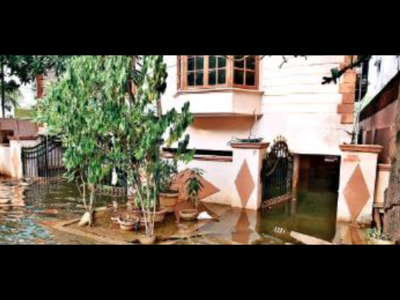The Hindu 11.08.2012
Needed: infrastructure to retain jobs in Kozhikode
Kozhikode has become a major creator of jobs among Tier 3 cities, but does it have adequate infrastructure?

Urban planners and Corporation authorities are yet to
wake up to the lag caused by infrastructure inadequacies in Kozhikode
even as various agencies laud the city for emerging as the leading
employment provider among Tier 3 cities in India.
A
study on “Emerging employment centres in Tier II and Tier III cities,”
carried out under the aegis of the Associated Chambers of Commerce and
Industry of India, revealed that Kozhikode was the top employment
provider among Tier 3 cities in the fourth quarter of the previous
financial year. The results of the study released in April show that
information-technology- enabled services, automobile, banking,
engineering and insurance sectors created the most jobs in the city.
The
growing employment opportunities sharpen the focus on a few daunting
tasks before civic planners. Some of these stem from the merger of the
Beypore, Elathur and Cheruvannur-Nallalam grama panchayats with the City
Corporation more than a year ago. The planners also need to think of
providing a support mechanism to the neighbouring Olavanna grama
panchayat, which caters for a large number of families depending on the
city daily.
The city contributes 22-23 per cent of
the population of the district. It used to show only a moderate increase
in population before the three grama panchayats were merged with the
civic body. Now there is a possibility of more panchayats getting merged
within a decade.
The population of Kozhikode city
was 4.19 lakh in 1991 and 4.36 lakh in 2001. The 2011 Census counted it
as 4.48 lakh. The projected population is 4.61 lakh in 2021 and 4.76
lakh in 2031. Here are the population figures for Elathur: 36,410
(1991), 41,326 (2001), 45,045 (2011), 48,576 (2021) and 52,705 (2031);
Beypore: 56,505 (1991), 66,895 (2001), 75,176 (2011), 86,926 (2021) and
1,02,164 (2031); and Cheruvannur-Nallalam: 50,556 (1991); 57,110 (2001);
62,044 (2011); 69,353 (2021) and 78,556 (2031).
Hitherto,
the planners have not given serious thought to the deficiencies in
development and ways to tap the growth potential of the city. Two major
problems experienced by citizens are a lack of a proper sewerage and a
shortage of drinking water. The problems in storm-water drainage,
leading to flooding and related environmental issues, add to the woes of
the residents during the monsoon.
Congestion on city
roads and lack of pedestrian facilities are other problems. Another
crisis is the increasing number of urban poor, which does not augur well
for a city marching to be the metropolis of north Kerala.
Lands than can be developed in the peripheral areas of Beypore, Nallalam, Elathur and Olavanna have not been utilised.Stagnation of the local economy is a further vexing issue.
Often
these problems remain unsolved because of poor coordination among
government agencies and the State government’s conflicts with the civic
body. Eventually, municipal governance is also hit, officials say.
Kozhikode
is strategically located in north Kerala with easy accessibility to
Mangalore and Mysore, two major cities in Karnataka, for enhancing
export and import. The national waterway passes through the city.
These have not been fully explored.
The
fishing harbours at Elathur and Beypore are yet to get importance.
Moreover, the industrial belt in the Cheruvannur-Nallalam areas remains
sluggish.Decentralisation of administration should pave the way for making use of availability of infrastructure for investment.
All
three modes of transport should be developed. The tourism potential of
the city as a base for hill tourism and water-based recreation should be
tapped.


